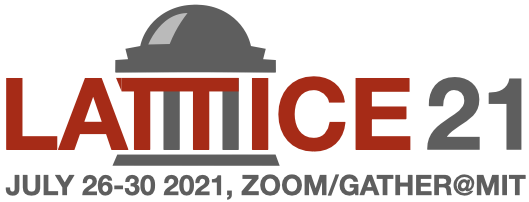Speaker
Description
In the early days of QCD, the axial $U(1)$ anomaly was considered to trigger the breaking of the $SU(2)_L\times SU(2)_R$ symmetry through topological excitations of gluon fields. However, it has been a challenge for lattice QCD to quantify the effect. In this work, we simulate QCD at high temperatures with the overlap Dirac operator. The exact chiral symmetry enables us to separate the axial $U(1)$ breaking effect from others among the susceptibilities in the scalar and pseudoscalar channels. Our result in two-flavor QCD indicates that the chiral susceptibility, which is conventionally used as a probe for $SU(2)_L\times SU(2)_R$ breaking, is actually dominated by the axial $U(1)$ anomaly at temperatures $T\ge 190$ MeV. This talk is based on our recent paper arXiv:2103.05954.




